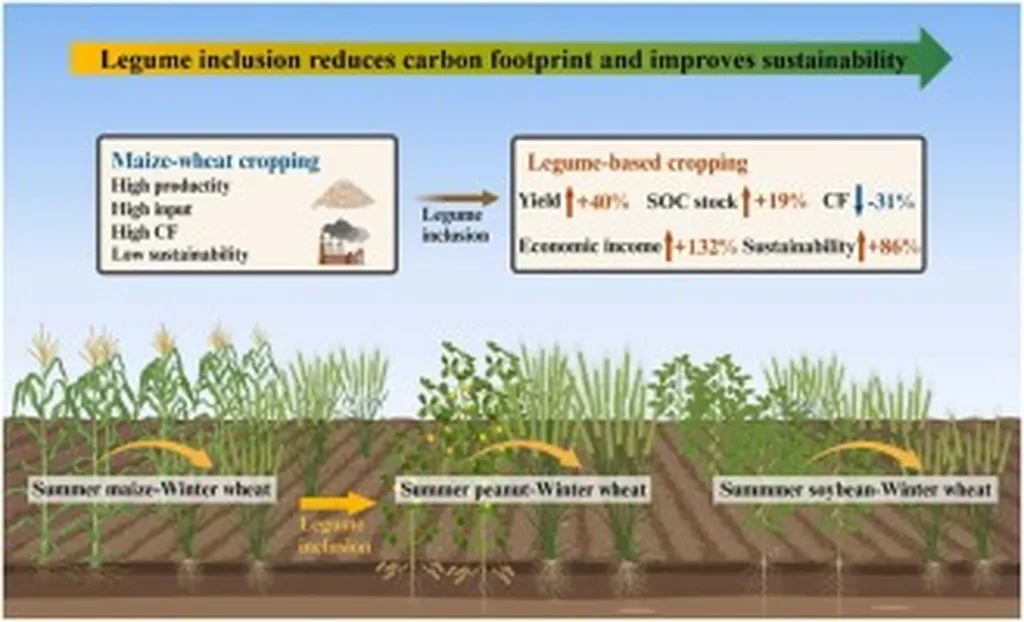In the quest for sustainable agriculture, farmers and researchers alike are turning to age-old practices with a modern twist. A recent study published in *MicrobiologyOpen* sheds light on how legume-cereal rotations can significantly impact the microbial communities in the soil, potentially boosting crop yields and reducing the need for synthetic inputs. The research, led by Ben Jesuorsemwen Enagbonma from the Food Security and Safety Focus Area at North-West University in South Africa, explores the intricate relationships between crop rotation, soil microorganisms, and nitrogen-cycling functions.
The study examined the effects of different cropping systems—cowpea–sorghum, soybean–sorghum, maize–sorghum rotations, and sorghum without precrops—on the rhizosphere microbial community structure and nitrogen-cycling genes. Using shotgun metagenomics, the researchers found that precropping in rotation significantly altered soil parameters like nitrate levels, clay, and silt content, and consequently, the rhizosphere microbiome.
Actinomycetota was identified as the most predominant bacteria across all cropping systems, followed by Pseudomonadota, whose composition varied depending on the rotation. “Legume in rotation increased the relative abundance of Streptomyces and reduced the relative abundances of Pyxidicoccus, Microbacterium, and Microvirga,” Enagbonma explained. This shift in microbial composition is crucial as it directly influences soil fertility and nutrient availability for subsequent crops.
The research also revealed that legume monocrops in rotation significantly increased the relative abundances of several nitrogen-cycling genes, including amoC, narH, gltB, glnA, ureC, napA, and napA. These genes play vital roles in nitrogen fixation, assimilation, and mineralization, which are essential for plant growth and development. In contrast, maize cropping increased the relative abundances of glnA, gltB, narZ, and narH, while sorghum without precrops led to an increase in glnA, narZ, and ureC.
The study’s findings have significant commercial implications for the agriculture sector. By optimizing crop rotations, farmers can enhance soil health and microbial diversity, leading to improved crop yields and reduced reliance on synthetic fertilizers. “This study supports sustainable agricultural practices and promotes sorghum development through rhizosphere microbiome optimization,” Enagbonma stated.
The research also highlights the importance of understanding the complex interactions between crops, soil, and microorganisms. As the agricultural industry faces increasing pressure to adopt sustainable practices, insights from this study could shape future developments in crop management and soil health. By leveraging the natural benefits of legume-cereal rotations, farmers can potentially reduce input costs, improve soil fertility, and enhance overall agricultural productivity.
In an era where sustainable agriculture is more critical than ever, this research offers a promising avenue for farmers and agronomists to explore. As Enagbonma and his team continue to unravel the intricacies of soil microbiomes, the agricultural sector stands to benefit from more resilient and productive farming practices. The study, published in *MicrobiologyOpen*, provides a solid foundation for future research and practical applications in the field.

